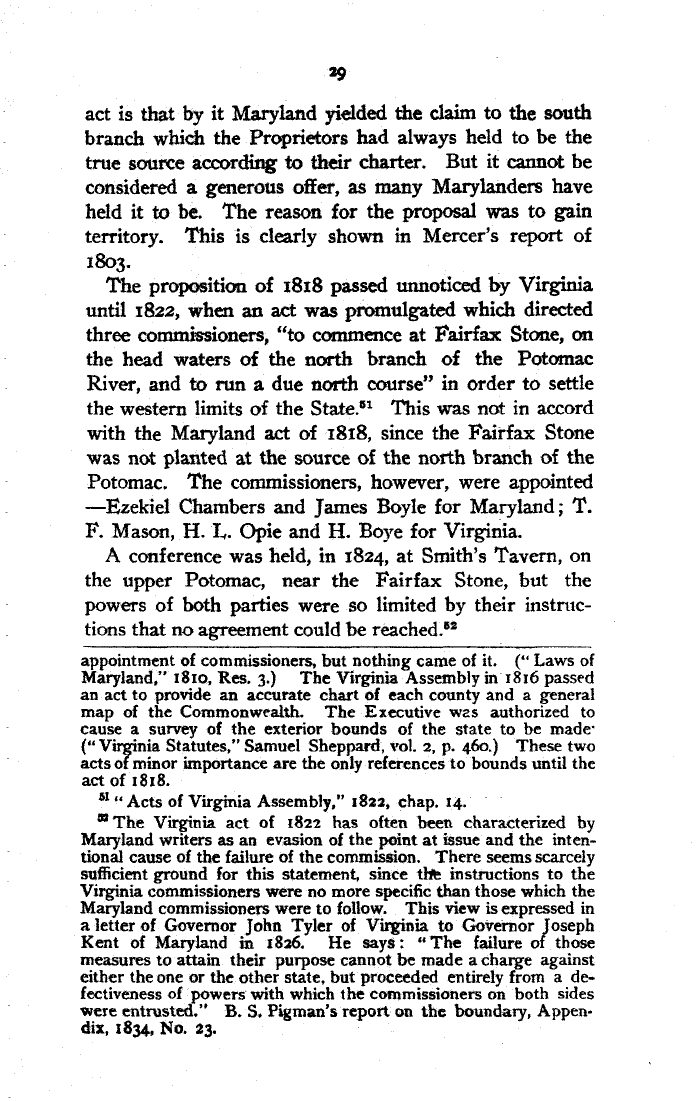| 29
act is that by it Maryland yielded the claim to the south
branch which the Proprietors had always held to be the
true source according to their charter. But it cannot be
considered a generous offer, as many Marylanders have
held it to be. The reason for the proposal was to gain
territory. This is clearly shown in Mercer's report of
1803.
The proposition of ><8><8 passed unnoticed by Virginia
until i8a2, when an act was promulgated which directed
three commissioners, "to commence at Fairfax Stare, on
the head waters of the north branch of the Potomac
River, and to run a due north course" in order to settle
the western limits of the State." This was not in accord
with the Maryland act of 1818, since the Fairfax Stone
was not planted at the source of the north branch of the
Potomac. The commissioners, however, were appointed
-Ezekiel Chambers and James Boyle for Maryland; T.
F. Mason, H. I,. Opie and H. Bove for Virginia.
A conference was held, in 1824, at Smith's Tavern, on
the upper Potomac, near the Fairfax Stone, but the
powers of both parties were so limited by their instruc-
tions that no agreement could be reached .52
=. ment of commissioners, but nothing came of it. (11 Laws of
d,"iSio,Res.3.) The Virginia Assembly in 1816 passed
an act to provide an accurate chart of each county and a general
map of the Commonwealth. The Executive was authorized to
cause a survey of the exterior bounds of the state to be made-
('- Vrrgrnia Statutes," Samuel Sheppard, v ol. 2, p. 460.) These two
acts of minor importance are tire only references to bounds until the
act of 1818.
ar " Acts of Virginia Assembly," 1822, chap. 14.
"The Virginia act of 1822 has often been characterized by
Maryland writers as an evasion of the point at issue and the inten-
tional cause of the failure of the commission. There seems scarcely
sufficient ground for this statement, since the instructions to the
Virginia commissioners were no more specific than those which the
Maryland commissioners were to follow. This view is expressed in
a letter of Governor John Tyler of Virginia to Governor Joseph
Kent of Maryland in t$zb. Ha says: "The failure of those
measures to attain their purpose cannot be made a charge against
either the one or the other state, but proceeded entirely from a de-
fectiveness of powers with which the commissioners on both sides
were entrusted. B. S. Pigman's report an the boundary, Appen-
dix, 1834, No. 23.
|

